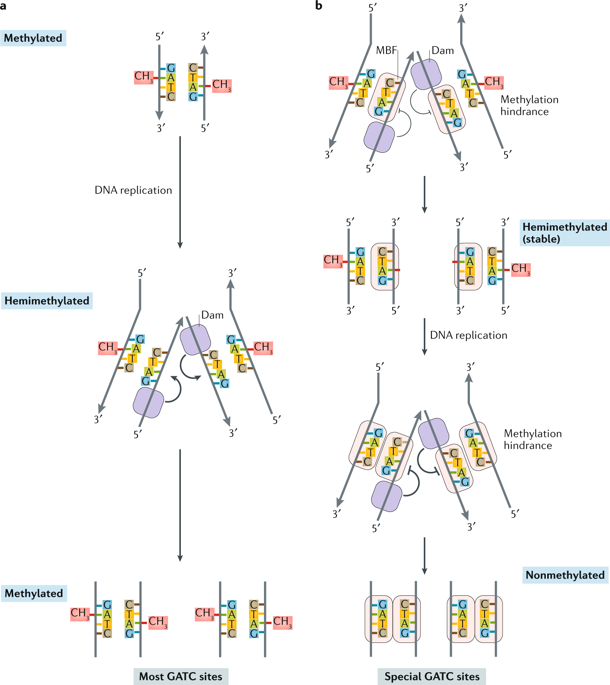当前位置:
X-MOL 学术
›
Nat. Rev. Microbiol.
›
论文详情
Our official English website, www.x-mol.net, welcomes your
feedback! (Note: you will need to create a separate account there.)
The bacterial epigenome.
Nature Reviews Microbiology ( IF 69.2 ) Pub Date : 2019-11-14 , DOI: 10.1038/s41579-019-0286-2 María A Sánchez-Romero 1 , Josep Casadesús 1
Nature Reviews Microbiology ( IF 69.2 ) Pub Date : 2019-11-14 , DOI: 10.1038/s41579-019-0286-2 María A Sánchez-Romero 1 , Josep Casadesús 1
Affiliation

|
In all domains of life, genomes contain epigenetic information superimposed over the nucleotide sequence. Epigenetic signals control DNA-protein interactions and can cause phenotypic change in the absence of mutation. A nearly universal mechanism of epigenetic signalling is DNA methylation. In bacteria, DNA methylation has roles in genome defence, chromosome replication and segregation, nucleoid organization, cell cycle control, DNA repair and regulation of transcription. In many bacterial species, DNA methylation controls reversible switching (phase variation) of gene expression, a phenomenon that generates phenotypic cell variants. The formation of epigenetic lineages enables the adaptation of bacterial populations to harsh or changing environments and modulates the interaction of pathogens with their eukaryotic hosts.
中文翻译:

细菌表观基因组。
在生命的所有领域中,基因组均包含表观遗传信息,该信息叠加在核苷酸序列上。表观遗传信号控制DNA-蛋白质的相互作用,并在不存在突变的情况下引起表型改变。表观遗传信号的一种几乎普遍的机制是DNA甲基化。在细菌中,DNA甲基化在基因组防御,染色体复制和分离,核苷组织,细胞周期控制,DNA修复和转录调控中起作用。在许多细菌物种中,DNA甲基化控制基因表达的可逆转换(相变),这种现象会产生表型细胞变体。表观遗传谱系的形成使细菌种群适应恶劣或变化的环境,并调节病原体与其真核宿主的相互作用。
更新日期:2019-11-14
中文翻译:

细菌表观基因组。
在生命的所有领域中,基因组均包含表观遗传信息,该信息叠加在核苷酸序列上。表观遗传信号控制DNA-蛋白质的相互作用,并在不存在突变的情况下引起表型改变。表观遗传信号的一种几乎普遍的机制是DNA甲基化。在细菌中,DNA甲基化在基因组防御,染色体复制和分离,核苷组织,细胞周期控制,DNA修复和转录调控中起作用。在许多细菌物种中,DNA甲基化控制基因表达的可逆转换(相变),这种现象会产生表型细胞变体。表观遗传谱系的形成使细菌种群适应恶劣或变化的环境,并调节病原体与其真核宿主的相互作用。











































 京公网安备 11010802027423号
京公网安备 11010802027423号